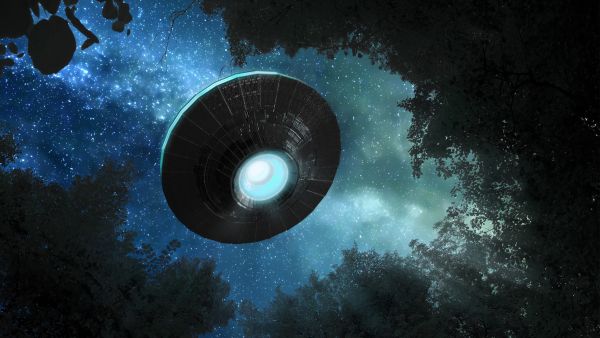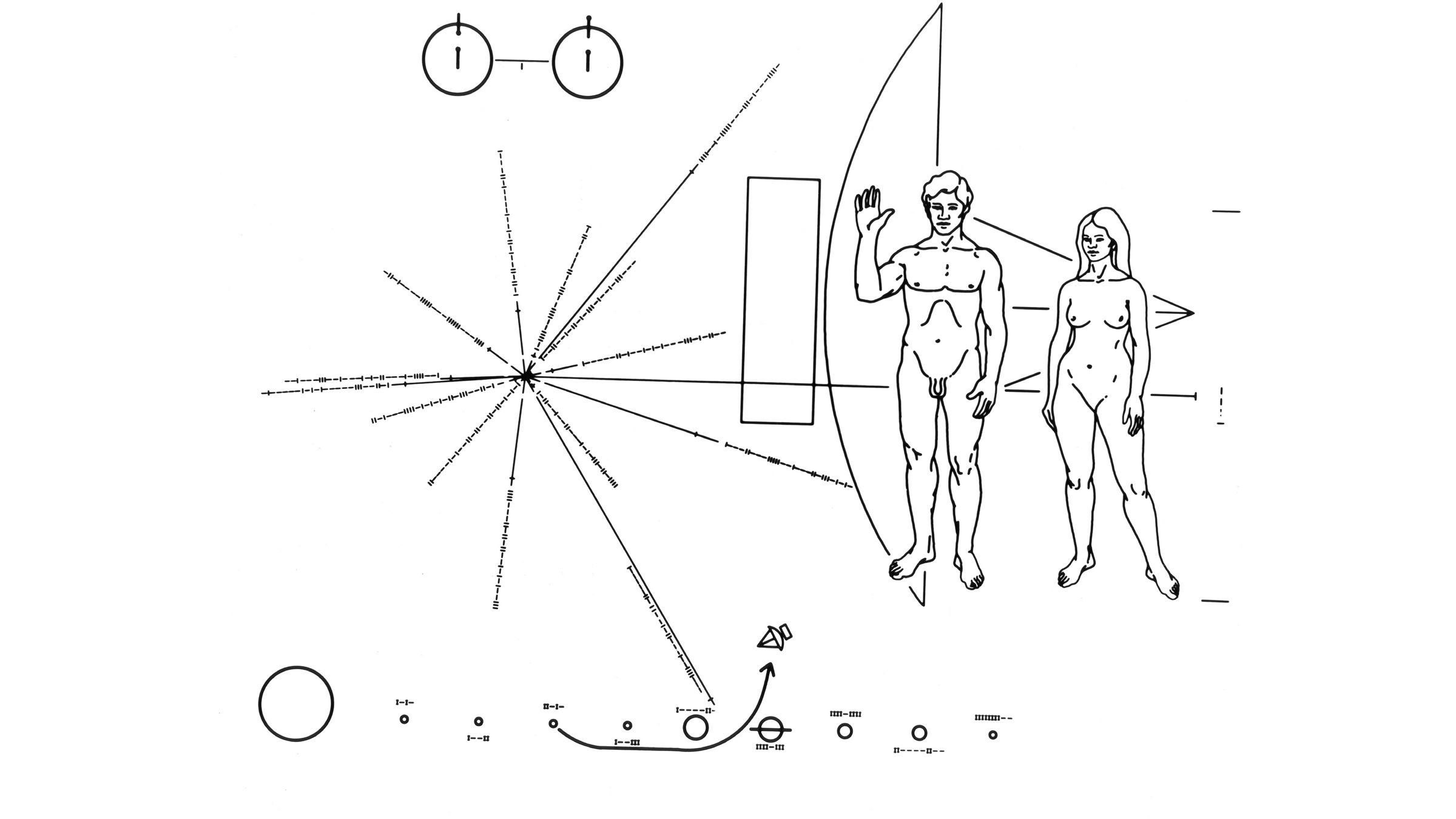How would we give aliens directions to Earth?
Phoning ET from home

The universe is inconceivably large and mind-bogglingly old. Given all that time and space, it seems probable that somewhere, sometime, another spark of intelligence flared into existence. But if there are intelligent beings somewhere out there, how on Earth could we connect with them and, assuming we'd like to be friends, how would we give them directions to our planet?
There are several techniques scientists could use to send directions to far-away aliens, but more importantly, researchers would have to figure out a way to send a readable galactic map to our guests — which is a tricky problem.
"If you try to tell somebody where you are, you need to have some common references, right? Ideally fixed references," Héctor Socas-Navarro, an astrophysicist at the Institute of Astrophysics of the Canary Islands, a Spanish archipelago in the Atlantic Ocean, told Live Science. "But nothing is fixed in the galaxy." Stars and planets are constantly in flux, moving around one another in a slow cosmic waltz. But even within our ever-shifting galaxy, scientists have come up with some ways to relay our location to whoever else may be out there.
Related: What messages have we sent to aliens?
"Most people would say, 'Send a strong radio wave transmission,'" Martin Rees, the U.K.'s royal astronomer, told Live Science.
Electromagnetic radiation, which includes everything from visible light to radio waves to infrared, has historically been the number one choice for broadcasting information about Earth into the cosmos. By subtly modulating the frequency of an electromagnetic wave, scientists can tap out complex messages in simple binary code. And because electromagnetic waves are directional, any intelligent aliens intercepting such a signal could simply trace it back to Earth.
Of all the different types of electromagnetic waves, radio waves are the usual go-to for such communication. That's because the frequency of radio waves fills a convenient gap in the electromagnetic spectrum, known as the "water hole," according to NASA. At this frequency — between 1420 and 1720 megahertz — hydrogen and hydroxyl (bonded oxygen and hydrogen) molecules, the two components of water, act as a kind of chemical "soundproofing," absorbing lower and higher vibrations and leaving the channel relatively free of cosmic background noise. Frequencies above and below the water hole are comparatively "noisy" because they are full of quantum vibrations and leftover radiation from the Big Bang.
Breaking space news, the latest updates on rocket launches, skywatching events and more!
Scientists have used radio waves to attempt extraterrestrial communication in the past. In 1974, researchers beamed a radio frequency message from the Arecibo telescope in Puerto Rico toward the M13 star cluster, approximately 21,000 light years away. The message was a simple binary pictograph containing a representation of a DNA molecule, our solar system and a stick figure human, among other things, according to the Search for Extraterrestrial Intelligence (SETI). Since then, numerous radio messages have been fired into space, including NASA's "Across the Universe" signal in 2008, which consisted entirely of the eponymous Beatles song.
One potential problem with radio waves, however, is that they diffract, or broaden, as they travel, much like a ripple expanding in water. That means that they may become too diffuse to carry a discernible message by the time they reach a distant galaxy, according to MIT's Lincoln Laboratory. For a more directed message, said Svetlana Berdyugina, an astrophysicist with the Leibniz Institute for Solar Physics in Germany, we should broadcast using visible laser light.
A targeted message made of polarized laser light, or light whose vibrations occur on a single plane, has the potential to travel much farther than a radio signal without degrading. However, because optical waves are a more tightly packed signal, they're very narrow. Scientists would need to use incredible precision when sending them. In other words, we would already need to know where our aliens were before we could send them laser directions.
Related: Could a spaceship fly through a gas giant like Jupiter?
Some scientists have taken a different approach to interstellar communication, one more akin to a "message in a bottle," Socas-Navarro said. The most famous is the golden "Pioneer plaque," which astrophysicists Carl Sagan and Frank Drake attached to the probe Pioneer 10 in 1972, according to the Planetary Society. A second, identical plaque was mounted on Pioneer 11 the following year. These plaques are inscribed with two human figures — a man and a woman — as well as a "map" pointing the way to our solar system using a series of 14 odd cosmic landmarks: pulsars.
Pulsars (short for pulsating radio source) are extremely dense, rotating remnants of dead neutron stars that emit beams of electromagnetic radiation from their poles. As they spin, these beams appear to "pulse" or blink, like a lighthouse beacon. Because pulsars represent a rare metronome-like point in the galaxy, they are extremely useful for navigation, Berdyugina said. In fact, NASA plans to use pulsars as a kind of cosmic GPS in future crewed missions into deep space, according to Nature. By measuring slight changes in the arrival of each pulse from three or more pulsars, a spacecraft can triangulate its position in the galaxy. On the Pioneer plaque, each pulsar is marked with a line indicating its distance from Earth, as well as a series of hatch marks to denote how fast it spins.
However, pulsars are uniquely directional; their flashes aren't visible from every angle. So if an alien civilization were to pick up the Pioneer plaque and read it like a map, "they would have to figure out what we see," Berdygina told Live Science, lest they miss a pulsar entirely. When they designed the plaque, Sagan and Drake were confident that any civilization advanced enough to find and capture the Pioneer probe would have a deep enough understanding of pulsars to read it.
But the Pioneer plaque isn't just a message in a bottle — it's also a time capsule. The hatch marks on its pulsar map indicate the rotational rate of each pulsar from a 1972 Earthling point of view. But those rapidly-spinning pulsars are slowing down. In several hundred million years, some of them may no longer be spinning at all. As Socas-Navarro pointed out, it could take far longer than that for an intelligent civilization to find the probe, much less travel to Earth.
So, while there are myriad ways humans could give aliens directions to our planet, another key ingredient in the search is this: patience.
Originally published on Live Science.

Joanna Thompson is a science journalist and runner based in New York. She holds a B.S. in Zoology and a B.A. in Creative Writing from North Carolina State University, as well as a Master's in Science Journalism from NYU's Science, Health and Environmental Reporting Program. Find more of her work in Scientific American, The Daily Beast, Atlas Obscura or Audubon Magazine.


